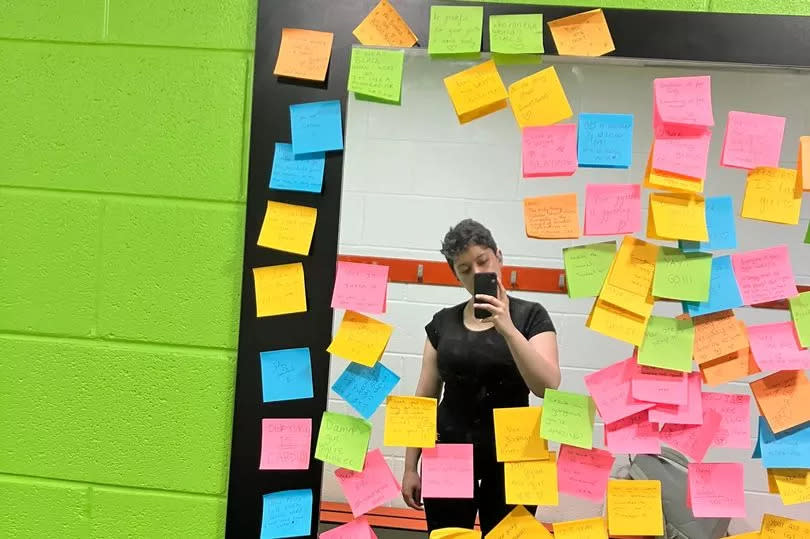'I started the gym as an absolute beginner - I've learnt five big things'

Going to the gym for the first time is definitely scary, especially as a young woman. It’s even more intimidating to immerse yourself into gym and diet culture and try to pretend like you know what’s going on.
The beginning of trying to adopt a fit lifestyle took me around two years during the Covid-19 pandemic. There was two years of dieting, cardio, mental battles… some of which could have been avoided. In my first year of university, pizza-crazed gym rats who somehow still stayed slim all told me the same thing: lift weights, make them heavier every week, and eat in a deficit.
So, I starting looking into how I should get started at the gym as someone who has always been physically weak and nervous about going to a space filled with experts. Fast forward and I’ve been going to the gym for nearly a year now - here are four different approaches I've tried which just didn't work for me, and the one conclusion I've come to. For the latest analysis of the biggest stories, sign up to the Wales Matters newsletter here
Read more: Woman says she has never felt better after giving up two things
Read more: Professor Tim Spector's everyday simple food swap to reduce blood sugar levels and help gut microbes
Keto saw results - but at a major cost
I started with the keto diet, which meant no carbs or dairy for 21 days to force my body into a state of ketosis, where your energy is taken from fat storage in the body. That meant no berries, bananas, biscuits, bread or rice. After the 21-day detox, I was allowed one source of major carbs a week. I followed it religiously (mostly) and did 30 minutes of cross training every day, all before 8am. Half an hour of exercise every day was the best part of the beginning. I had my music, and I felt fantastic afterwards, and even more so when I was beginning to see results! However, personally, I found that when I wasn’t obsessing over my measurements and the number on the scale, everything dropped quicker. I still find that to be the case today.
As for the dieting… It was not enjoyable. I reaped the rewards, and shed around 15kg over those two years, but at the cost of my relationship with food. Food is the real demon in fitness. I love to go back for seconds, eat dessert, cookies for lunch, and order fast food. There is no debate that if you eat protein and vegetables, you will lose fat and improve your overall fitness, but my concern is establishing a healthier relationship with food. All women will understand the pressures of diet culture, being told that you should live on a rabbit’s diet and be happy doing it - that’s not for me.
And the 80/20 rule just made me feel guilty

Later on I was introduced to the 80/20 rule; 80% of what you eat should be nutritious (note: nutritious, not what we think of as ‘healthy’) and the other 20% can be whatever you’re craving - pizza, chocolate, cake, noodles, fried chicken. I liked this rule. It was a win-win, in my head, but this meant counting meals. ‘In two days, I can have KitKat for dessert… one more day!’. It took away enjoyment from my day-to-day meals. And if I deviated, I felt guilty, like I cheated on my plan and that meant I had to skip dessert for a whole week. It moved away from fitness and became a guilt game, which dampened my motivation and body image. More recently, I decided to change my diet plan to fix this. Now I’m working on a simpler diet plan; to eat intuitively, and just enjoy looking after my body at the gym.
Split workouts meant progress, if you had the time
Alongside my diet, I also started researching and watching videos trying to understand the science behind losing fat and gaining muscle. I understood the basics; the action of lifting weights breaks down the muscle, and on rest days it grows back bigger and stronger. The internet told me I needed to go three times a week to grow muscle. YouTube videos and TikToks were my go-to for tutorials and perfecting form.
The first workout routine I followed was the upper body/lower body split. This means on a Monday, I would do triceps, biceps, shoulders, back, core, and (sometimes) chest. There were two or three exercises for each muscle group, and I was in the gym for roughly two hours at a time, including 15 minutes of cardio at the end. On a Tuesday, I would do glutes, quads, hamstrings and calves, and this took just as long. And then I would repeat. This worked very well for simultaneous muscle growth and fat loss, my results were near enough instant… but I was so tired afterwards! Once university started up again, I couldn’t keep up with two-hour gym sessions. So, I tried a different split.
But my next routines were even more unrealistic
The next one I tried was the push/pull split. Any movement where I was pulling a dumbbell or machine towards me was a pull movement (such as cable rows, RDLs), and any push movements would be things like shoulder press, hip thrusts. I found that I worked much harder on push days, as most of my exercises were push, so I worked a lot harder on a Monday than I did a Tuesday, and I didn’t really want to go to the gym six days a week to ensure my muscles worked enough. So, it was back to the drawing board.
Finally, I've found something which works for me - and learnt one big thing

My current split, and the routine that has lasted the longest, are full body workouts. I only need to go three times a week, and I don't feel like I’m hindering my progress or not working enough. I stick to the basic but also the best exercises like bicep curls and squats. In between each gym day, I make sure to do a cardio day in between, whether it’s a 20-minute run or a 40-minute walk outside. This, ironically, was the split that no PT had told about… but it works best for me. The gym is, ultimately, about taking care of yourself no matter when and how you’re prepared to do it, and that’s something I’m still learning. I control my fitness, my fitness does not control me, and there’s a similar lesson to be learned there about food.
Meanwhile, by following a diet, it took me back to obsessing over the number on the scale. Which is hard if you’ve been going to the gym, because although you’ve reached your goal of fitting into a size 10 top, you’ve somehow reached ‘overweight’ on the scales. Herein lies the proof that the numbers don’t matter, and that to overcome this idea means a change in mindset.
Much like we like to be mentally challenged by reading, writing, studying and working, we were also made to do something with our bodies, and I don’t enjoy sitting still all day! I’m attempting to take a new perspective whereby I am building my body because that’s what it wants. I’m taking a similar stance with food and trying to become an intuitive eater; I’ll eat when I’m hungry, or when I fancy it. Without the mental barriers I’m finding that I binge less, I want to eat more fruits, I enjoy the cookie even after I’ve eaten it, and I’m finding my place in the gym as a regular. I no longer go to the gym to reach a goal weight, or because I must, but because it’s a form of self-care.

 Yahoo News
Yahoo News 
